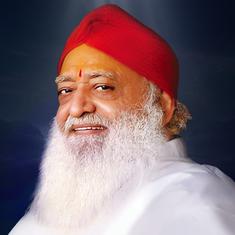As “experts” from the “national media” were airdropped on Bengal during the campaign for the assembly elections, they confidently filled with airwaves and churned out column inches with a variety of theories about how the state would vote.
They detected an anti-incumbency sentiment against Chief Minister Mamata Banerjee and reported on corruption and nepotism in her Trinamool Congress party. They claimed that the Bharatiya Janata Party had created an invincible juggernaut because of the “magician and the Chanakya” pair of Prime Minister Narendra Modi and Home Minister Amit Shah. They discussed the unprecedented religious and caste identity politics in play in Bengal.
In the middle of the din of the mega roadshows were small, earnest initiatives led by young cultural activists who campaigned against the politics of hate and bigotry with a simple message: “No Vote to BJP”. Their efforts gained traction on social media and the local print media.
Having covered or closely watching eight previous elections in Bengal since 1982, I had never seen any such effort before.
No vote to BJP 🙏@dhruv_rathee @kanhaiyakumar pic.twitter.com/nJKQ2LNrzD
— Md Kuddush قدس محمد (@MohammadKuddu12) April 29, 2021
Shortly after, a section of celebrity artists weighed in with their own video with the same message. This is not new. Since the 1940s, celebrity artists from Bengal have been associated with progressive ideas and have not been shy of speaking out against the status quo.
Following the final results that showed of the voters had emphatically supported Mamata Banerjee and her candidates, a stream of analysis is emerging to explain how a woman could have taken on the combined might of the Modi and Shah, the BJP’s enormous money power and its ability to influence Central government institutions such as the Election Commission.
Some commentators point out the balance was titled by women and Muslims voters favouring Banerjee and by the slew of social security benefit measures her government has initiated. All of these arguments have merit. Some have also pointed to another significant factor: the essentially inclusive nature of the Bengali society that rejected the communal politics of the BJP.
What is missing from these analytical pieces is the importance of Bengali culture – not the art, literature, cinema, theatre that Bengalis cherish but the argumentative Bengali psyche that cherishes politics and is programmed to stand up to authority.
During the Raj, Bengalis were among the first groups to challenge colonial rule. This took the form of both legal strategies as well as armed struggles in which dozens of young men and women went to the gallows. During the Bengal Renaissance of the mid-nineteenth century, Raja Rammohan Roy worked to eradicate the system of sati and Ishwar Chandra Vidyasagar pushed legislation that allowed Hindu widows to get married. Both did so in the face of stiff resistance from upper-caste leaders.
The Young Bengal movement was also animated by this spirit. It created the environment in which Michael Madhusudan Dutt wrote Meghnad Bodh Kavya, an alternative take on the Ramayana in 1861. It gave a Begum Rokeya Sakhawat the courage to weather opposition to start a modern school for Muslim girls in 1911.
This tradition continued in the twentieth century, when Bengali women joined the freedom movement in large numbers. Some of them later joined the Communist Party and, from the 1950s, led mass movements. In the same tradition, thousands of students in 1967 were inspired by the dream of building a just society through revolution. That revolution never came but the embers of it encouraged students to be involved in politics and social action for decades to come.
So it was not unusual when many young people joined the protests against the Citizenship Amendment Act and the proposed National Register of Citizens started by a group of Muslim women in 2019. They lost no time in mobilising support for the victims of Cyclone Amphan that ravaged southern Bengal in May 2020, in the middle of the pandemic. They also kept community kitchens running for months to feed the urban poor and migrant workers who lost their livelihoods because of the harsh lockdown in that period.
When these young people channelled their energy into the “No Vote To BJP” campaign as soon as the polls were announced, their efforts surely swayed many voters who might have been anti-Mamata Banerjee.
This Bengali attitude needs to be taken into account while explaining why the BJP got such a drubbing in the hands of Mamata Banerjee. Bengalis saw through what the BJP and its leader represented – total obedience, no questioning of elders and the norms they set, to be pliant and accept a toxic politics of social division. The BJP leadership failed to understand this Bengali culture that has always has always been critical of authority. That was their undoing.
Nazes Afroz, a former senior editor of the BBC World Service, is a veteran journalist and photographer from Kolkata.










